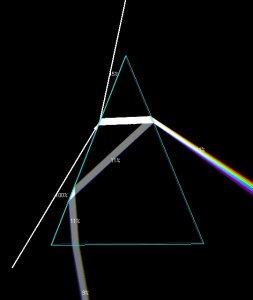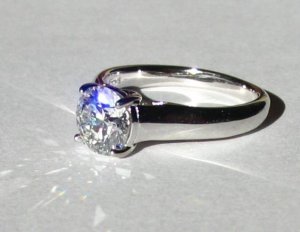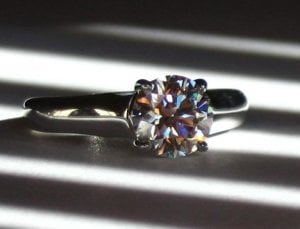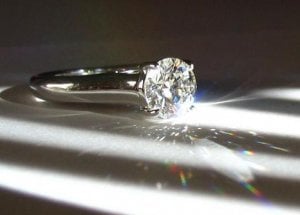- Joined
- Aug 15, 2000
- Messages
- 19,105
Date: 10/12/2006 1:01:34 PM
Author: Rhino
Garry ... love the last shot you posted particularly the in-focus one in the upper right under the tree. IMO that is an excellent example of being able to observe both brightness and fire at the same time. I have this recorded in macro hi def video too and your pic is a nice static shot.
Cehera-Lynn, that''s what I''d consider soft dispersion mixed with brightness while the other shots in more direct lighting I''d consider strong fire.
A couple of years ago (I think it was during GIA''s research on DCLR (dispersed colored light return)) they broke down different definitions between ''fire'' and ''dispersion'' although in the minds of most they mean the same thing as they are closely related.
Actually ... here''s a link to the article specifically on this subject on the GIA site which I think most here will find interesting.
http://www.gia.edu/research/1383/2307/article_detail.cfm
This article http://www.gia.edu/pdfs/Fall_2001_Cut.pdf is a much harder read Rhino, but shows how GIA attempted to quantify or design a metric for fire (DCLR).
Here are some quotes from it:
However, in
the same dictionary, the definition for fire states
merely ¡§see Dispersion.¡¨ Since all diamonds have
the same dispersion value (0.044), this definition is
not adequate. Rather, fire is the result of dispersion.
Thus, we suggest a more direct definition: fire is the
visible extent of light dispersed into spectral colors.
As with WLR to express brilliance, we have developed
a metric, or number, to express how well a
round brilliant can disperse¡Xor spread¡Xlight into
colors (dispersed colored light return, or DCLR, as
defined on p. 181 below).
Our ¡§observer¡¨ for WLR was a hemisphere
at infinity (with a cosine squared weighting
function for the returned light), and we found that
this observer was a good choice for viewing fire
The combination of point light source and infinite
viewing distance yields only dispersed light on
the observing hemisphere; that is, the result appears
as various colored streaks (with no white centers).
These streaks are composed of colored spots showing
the final exit directions of individual rays.
DCLR = „¦streaks „¦colors (Area „ªƒnSmoothed Intensity
„ªƒnWeighting Factor)
The last part is a mathematical formula that probably does not copy and paste.
Sergey showed the GIA researchers after that article, in a never published letter to the Editor of Gems & Gemology, that their formula was independant of dispersion - so they would get the same result for quartzs as for diamond.
It is also clear that they used a model that avoided the white flare that is common in the center of a spectral flash - they did this by using the equivalent of an infinite light surce (like the sun) and assessing the fire at an infinite distance. They wasted a heap of money.
They could have used Sergey''s and Yuri''s free tools that were published years before on the Moscow Uni site and done a better (but still wrong) job.
There is more to be learned from looking at and reading about the images posted here


























300x240.png)